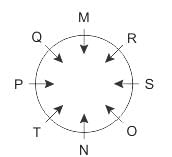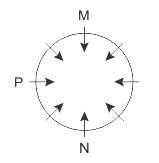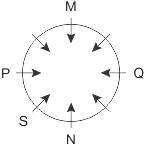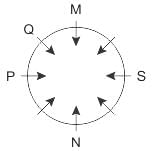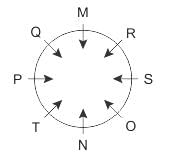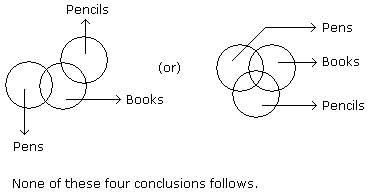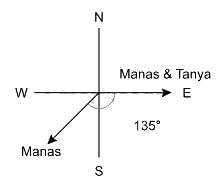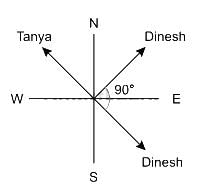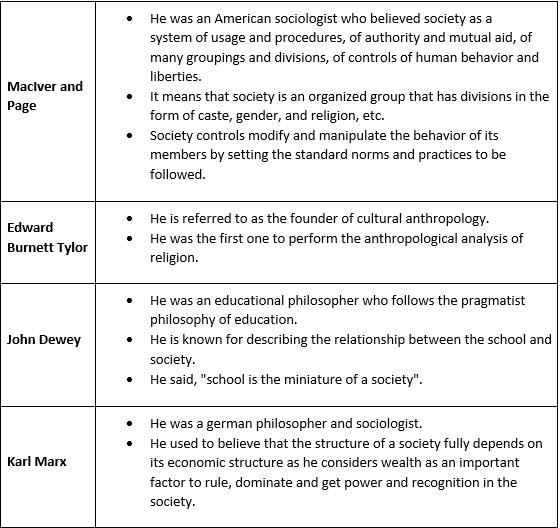Uttarakhand D.El.Ed Mock Test - 10 - UTET MCQ
30 Questions MCQ Test Uttarakhand D.El.Ed Mock Test Series 2025 - Uttarakhand D.El.Ed Mock Test - 10
What was the title of the administrative officer of a port during the Mughal period?
Which of the following is NOT a criterion for selecting the Dada Saheb Phalke Award recipient?
Directions:
In each of the following questions, there are four sentences or parts of sentences that form a paragraph. Identify the sentence(s) or part(s) of sentence(s) that is/are correct in terms of grammar and usage (including spelling, punctuation, and logical consistency). Then, choose the most appropriate option.
A. Diseases when suffered by poor appear
B. to be more deadly than when they afflict better of people.
C. The less affluent, indeed, are more likely to die
D. off diseases than people who are rich.
In each of the following questions, there are four sentences or parts of sentences that form a paragraph. Identify the sentence(s) or part(s) of sentence(s) that is/are correct in terms of grammar and usage (including spelling, punctuation, and logical consistency). Then, choose the most appropriate option.
B. to be more deadly than when they afflict better of people.
C. The less affluent, indeed, are more likely to die
D. off diseases than people who are rich.
Read the each sentence to find out whether there is any grammatical error in it. The error, if any will be in one part of the sentence. The letter of that part is the answer. If there is no error, the answer is 'D'. (Ignore the errors of punctuation, if any).
1. The project’s water source is the Deviyar stream, which links to the Periyar River.
2. After electricity generation, the project ensures water is released back into the Deviyar stream to maintain ecological balance.
3. The project was funded with a total investment of ₹188 crore.
Which of these statements is/are correct?
1. The demand for a separate Uttarakhand state was first raised in 1938 by the Indian National Congress.
2. Uttarakhand was established as a separate state in 2000, becoming India’s 27th state.
3. The movement was mainly driven by economic issues in the region.
Which of these statements is/are correct?
What recent weather event helped alleviate the forest fires in Uttarakhand?
Direction: Study the following information carefully and answer the given questions besides.
M, N, O, P, Q, R, S and T are sitting around a circular table and all are facing the centre of the table. M is sitting fourth to the right of N. P is sitting second to the left of N. Q is sitting third to the right of S. T is sitting second to the left of O. S is not sitting beside P. O is not sitting beside M.
Q. Which of the following person sits immediate right of P?
Directions to Solve
In each of the following questions two statements are given. Which are followed by four conclusions (1), (2), (3) and (4). Choose the conclusions which logically follow from the given statements.
Question -
Statements:
- Some pens are books.
- Some books are pencils.
Conclusions:
- Some pens are pencils.
- Some pencils are pens.
- All pencils are pens.
- All books are pens.
Directions: Each of the following consists of a question and two statements numbered I and II given below it. You have to decide whether the data provided in the statements are sufficient to answer the question:
Which direction is Tanya facing?
Statement I: If Manas who is currently facing southwest (at 45° angle), turns 135° anticlockwise, he would face the same direction as Tanya.
Statement II: If Dinesh who is currently facing northeast (at 45° angle) turns 90° clockwise, he would face the direction 180° to the direction Tanya is facing.
Directions: Each of the following consists of a question and two statements numbered I and II given below it. You have to decide whether the data provided in the statements are sufficient to answer the question.
There are six friends namely K, L, M, N, O and P. Who is the shortest among all?
Statement I: M is shorter than only P. K is taller than both L and N.
Statement II: M is shorter than P and L. K is shorter than P but taller than L. O is shorter than K but not taller than M. P is not tallest.
Directions: Read the following information carefully and answer the questions given beside.
In a certain code language,
“Solid Light Crazy” is coded as “B3 W19 G12”
“Distance Time Speed” is coded as “V20 W19 V4”
“Mixture Comes Out” is coded as “H3 G15 V13”
What will be the code for “Time”?
Gita is older than her cousin Mita, Mita's brother Bhanu is older than Gita. When Mita and Bhanu are visiting Gita, all three like to play a game of Monopoly. Mita wins more often than Gita does.
Which of the following can be concluded from the above?
If 3x2 + 3y2 = 10xy, what is the ratio of x to y?
A is working and B is the sleeping partner in a business. A invests Rs. 12,000 and B invests Rs. 20,000. A receives 10% of the profit for managing. The rest is divided in the ratio of their capitals. Out of a total profit of Rs. 9600, what will be the amount received by A?
The cost of a diamond varies directly as the square of its weight. Once, this diamond broke into four pieces with weights in the ratio 1 : 2 : 3 : 4. When the pieces were sold, the merchant got Rs. 70,000 less. Find the original price of the diamond.
Consider a class of 40 students whose average weight is 40 kgs. m new students join this class whose average weight is n kgs. If it is known that m + n = 50, what is the maximum possible average weight of the class now?
Of all the articles manufactured by a company, 5% are defective. If the manufacturing cost of 100 articles is Rs. 1900, what should be the market price of the article so that the company gets 40% profit, even if it gives the articles to the distributor for 30% less price than the market price?
A shopkeeper bought 480 chocolates at ₹ 6 per dozen. If he sold all of them at ₹ 0.75 each, what washis profit per cent?
AB is the diameter of the circle and ∠PAB=40∘
what is the value of ∠PCA?
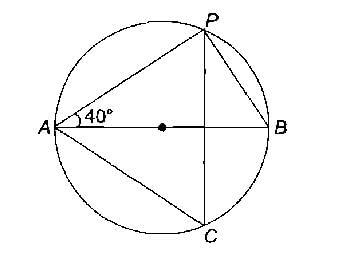
Later childhood is characterized by
I. Shedding of milk teeth
II. Increased manual dexterity
III. Increased strength
American sociologist ____________ consider, “society as a system of usage and procedures, of authority and mutual aid, of many groupings and divisions, of controls of human behavior and of liberties."
The style of writing and imaginative capacity of students can be measured through this type of questions.
Consider the incorrect statement.
(I) Ego is considered as the moral component of personality.
(II) Superego contains all the moral standards learned from parents and society.
(III) Id tries to maintain a balance between ego and super-ego.
Which of the following statements concerning the validity and reliability of a test is most accurate?
As per National education policy 2020, education must-
(i) Be focused only on pre-planned content
(ii) Focus on problem-solving.
(iii) Develop critical thinking among learners.
(iv) Be inquiry-driven and discovery-oriented.
For the inclusion of students from religious minorities, a teacher should:



